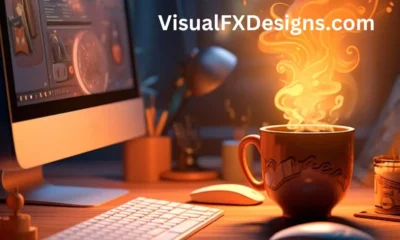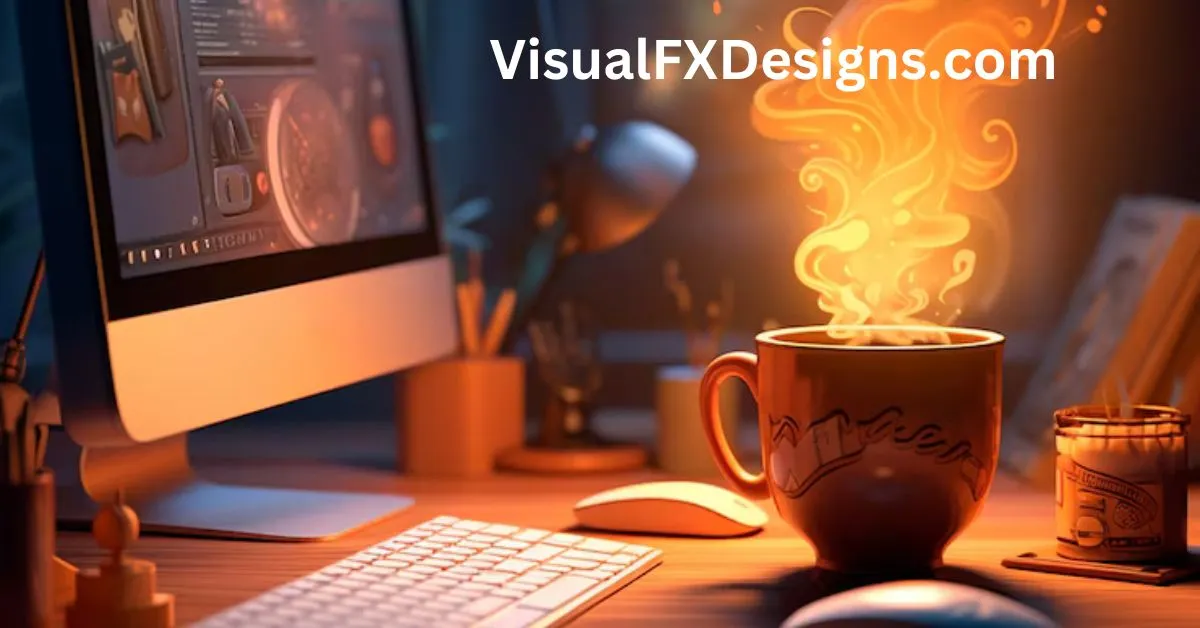In today’s digital landscape, visual effects (VFX) are no longer confined to blockbuster films. They are woven into everyday digital marketing, video production, gaming, and even mobile apps. Whether you’re a professional designer or a novice exploring the world of VFX, mastering the art of visual effects can open doors to endless creative opportunities. This article is your guide to navigating the vast world of VFX, helping you enhance your skills and create visually stunning projects that captivate audiences.
Understanding the Basics of Visual Effects
Visual effects (VFX) refer to the process by which imagery is created or manipulated outside the context of live-action shots. In simple terms, VFX is used to create environments, objects, creatures, and more, that would otherwise be impossible to capture on camera. Understanding the foundation of VFX begins with knowing the different types of effects, such as computer-generated imagery (CGI), compositing, and motion capture. Whether you’re adding fire to a scene or creating an alien world, the basics of VFX remain the same—using technology to push creative boundaries.
Popular VFX Tools for Designers
The success of a VFX designer largely depends on the tools they use. Industry-standard software includes programs like Adobe After Effects, Autodesk Maya, Blender, and Cinema 4D. Each of these tools serves different purposes, from 3D modeling to motion graphics, and mastering them is crucial for any VFX designer. While some tools may seem daunting at first, there are countless online tutorials and communities to help you navigate the learning curve. Invest time in understanding each tool’s capabilities to elevate your designs and meet the demands of various projects.
Key Techniques in Visual Effects Design
Mastering VFX requires a blend of technical skill and artistic vision. Some key techniques include compositing, where multiple images or videos are layered together to create a single, cohesive scene. Another technique is motion tracking, where real-world camera movements are digitally recreated. Similarly, matte painting allows artists to create photorealistic backgrounds that can enhance or replace the filmed location. Understanding these techniques will give you the flexibility to bring any idea to life, whether it’s subtle enhancements or jaw-dropping visuals.
The Role of VFX in Modern Media
VFX has become an integral part of modern media, transcending traditional film to find applications in television, video games, advertising, and even virtual reality. In today’s hyper-visual world, audiences expect high-quality visual content that not only entertains but also engages. As the demand for immersive experiences grows, VFX plays a pivotal role in storytelling, helping creators craft compelling narratives that would be impossible to convey through live-action alone. From fantastical creatures to mind-bending environments, VFX is shaping how stories are told.
How to Integrate VFX into Your Workflow
Incorporating VFX into your design process may seem overwhelming, but it can be done systematically. Start by identifying the areas where VFX will add the most value to your project. This could be through enhancing the visuals, correcting flaws in filming, or creating entirely new elements. Next, ensure your computer is equipped to handle VFX software, as these programs require significant processing power. Finally, integrate VFX into your post-production workflow by collaborating with editors, sound designers, and other team members to ensure a seamless final product.
Trends Shaping the Future of Visual Effects
The VFX industry is constantly evolving, with new technologies emerging regularly. Some of the most significant trends include the rise of real-time rendering, which allows designers to see changes in their work immediately. Virtual production is another trend gaining traction, blending CGI and live-action in real time to streamline the filmmaking process. Additionally, artificial intelligence (AI) is beginning to play a role in VFX, automating tedious tasks and allowing designers to focus on creativity. Staying updated on these trends is crucial for anyone looking to remain competitive in the industry.
Challenges and Solutions in VFX Design
Like any creative field, VFX comes with its challenges. One common issue is rendering time, as high-quality effects can take hours or even days to process. Additionally, working with large files can strain even the most powerful computers. To overcome these challenges, many designers are turning to cloud-based rendering solutions, which allow them to leverage remote servers for faster processing. Another challenge is staying on budget, as VFX projects can quickly become expensive. By streamlining workflows and using pre-built assets, designers can save both time and money.
The Impact of VFX on User Experience
In addition to enhancing visuals, VFX can have a profound impact on user experience (UX). Whether in a video game, mobile app, or website, VFX can guide users through an experience, making it more engaging and intuitive. For example, subtle visual cues like transitions and animations can make an interface feel smoother and more responsive. However, it’s important to strike a balance—overloading a design with too many effects can overwhelm users and detract from the overall experience.
VFX for Marketing and Advertising
In the world of marketing and advertising, VFX has become a powerful tool for brands looking to stand out in a crowded market. From eye-catching video ads to interactive experiences, VFX can help brands tell their story in unique and memorable ways. As video content continues to dominate digital marketing, companies that leverage VFX in their campaigns can create visually stunning ads that capture attention and drive engagement. Whether it’s a product demo or a full-scale commercial, VFX offers limitless possibilities for creative storytelling.
How to Stay Updated in the Ever-Evolving VFX Industry
With the VFX industry advancing at a rapid pace, it’s crucial to stay informed about the latest tools, techniques, and trends. One way to do this is by joining VFX communities, where professionals share insights and resources. Attending industry conferences and workshops is another excellent way to stay updated and network with other designers. Additionally, following industry publications and blogs can keep you informed about new software updates and emerging technologies. By staying proactive, you can continue to grow as a VFX artist and stay ahead of the curve.
Frequently Asked Questions
1. What is VFX?
Visual effects (VFX) involve creating or manipulating imagery outside of live-action shots to produce scenes that are impossible or impractical to capture on camera.
2. What are the essential tools for VFX design?
Some essential VFX tools include Adobe After Effects, Autodesk Maya, Blender, and Cinema 4D.
3. How does VFX differ from CGI?
CGI, or computer-generated imagery, is a subset of VFX that specifically refers to creating images using computer software, whereas VFX covers a broader range of techniques.
4. Can I learn VFX without prior experience?
Yes, many online courses and tutorials are available for beginners looking to learn VFX, even without prior experience.
5. How do I incorporate VFX into my workflow?
Start by identifying areas where VFX will enhance your project, and ensure your system can handle the software requirements.
6. What are some common challenges in VFX design?
Rendering time, large file sizes, and budget constraints are common challenges in VFX design.
7. What are the trends shaping the future of VFX?
Trends like real-time rendering, virtual production, and AI integration are shaping the future of VFX.
8. How does VFX impact user experience?
VFX can make digital experiences more engaging and intuitive, but it’s important to avoid overwhelming users with too many effects.
9. How is VFX used in marketing?
VFX is used in marketing to create visually stunning ads and interactive experiences that capture attention and drive engagement.
10. How can I stay updated in the VFX industry?
Join VFX communities, attend industry events, and follow publications to stay informed about the latest trends and technologies.
Conclusion
The world of visual effects is vast and ever-evolving, offering limitless creative possibilities for designers, filmmakers, and marketers alike. By mastering key techniques and staying up to date with industry trends, you can create compelling visuals that captivate and engage your audience. Whether you’re creating effects for film, advertising, or interactive media, understanding the fundamentals of VFX will help you push the boundaries of what’s possible. With the right tools, knowledge, and passion, you can transform any project into a visual masterpiece.

 Business7 months ago
Business7 months ago
 Tech8 months ago
Tech8 months ago
 News8 months ago
News8 months ago
 Blog8 months ago
Blog8 months ago
 Life style8 months ago
Life style8 months ago
 Tech7 months ago
Tech7 months ago
 Blog8 months ago
Blog8 months ago
 Life style8 months ago
Life style8 months ago



